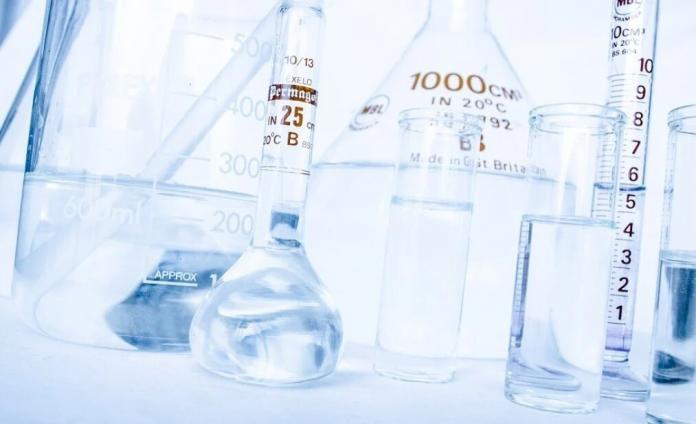This test is one of the best antibacterial testing methods for textile material with an antibacterial layer. Many testing methods help discover the activities of bacterias and viruses on various customer products. These tests have several steps, and it also includes multiple components. And Jis l 1902 test method is an antibacterial test especially for textile products with an antibacterial finish, including non-woven products. This test method is the best option for quantitative testing to find the exact results of the test.
The test is primarily for clothes with an antibacterial coating to prevent the growth of bacteria while using. These coatings kill all the microorganisms that grow on the product’s surface. It also has another name, ISO 20743, which denotes that this antibacterial testing can execute on textile products. This test method is not only for clothes but also for other similar materials. Materials like thread, wadding, household furnishings, and even industrial goods are applicable for this test.
Various types of testing
All the testing laboratories have antibacterial and antiviral testing methods. And in each type, they have several testing methods. Antibacterial testing is the process of allowing real-time bacterias that are available around us to react with the customer products to test the reaction. Similarly, antiviral testing is also the same testing with real-time viruses on the item. These tests will help the product providers to know about their product and also help to improve the product’s quality.
Antibacterial testing has various testing methods, and each one is for different kinds of customer materials. ASTME2149, AATCC-100, JISZ2801, EN 1276, and Jis l 1902 test methods are the standard antibacterial methods. ISO21702, ISO18184, EN 14476 are the antiviral test methods. Each test method is specifically for unique materials, and all these test methods have special testing steps or processes. But all the test aims to find the final result for customer products.
Tests on various products
Each test method has a unique ability to test certain products, and their testing method works for specific products only. In antibacterial testing, ISO 20743, AATCC 100, and ASTM E 2149 are suitable for testing various textiles and related products. Similarly, some tests like ISO 18184, JISL1922 are ideal for testing textile products in antiviral testing. These tests will use several strains as per the requirement for customer products. These tests are also suitable for various products like jeans, jackets, leather bags, and even medical drapes.
For plastic products like mobile covers, packaging products, film-based packings, and automobile filters, ISO 22196 is the antibacterial test method, and ISO 21702 is the antiviral test method. Most people use coating materials like paints and sprays, so they use ISO 22196 antibacterial testing and ISO 21702 antiviral testing for testing these materials. In the case of surface disinfectants, they use EN 1276 antibacterial and EN 14476 antiviral testing methods for products like hand sanitizers, gels, automobile hygienists, and more.
Working of Jis l 1902
The test process of this antibacterial testing method has several techniques, and each approach has various uses. This testing process uses different organisms like Staphylococcus aureus (ATCC 6538p), Klebsiella pneumonia (ATCC 4352), and Escherichia coli (ATCC 8739). All these are the organisms that are useful for this antibacterial testing method. And it is possible to add extra strains or organisms as per customer requirements. these steps for conducting this test are
- Sample preparation
- Sterilization
- Inoculation
- Incubation
- Wash and shake
- Count
Following these processes will help find the microbial activities of the organisms on the surface of the products. The sample preparation process will differ for each testing method. And in the incubation process, the lab will create a different and suitable place for the bacterias to react with the product. After completing all these processes, the final output will explain the test result with the capacity level of the product. These are the basic working of this antibacterial test.
Sample preparation
The sample preparation process of this Jis l 1902 test method is different from other test methods. The first step is to create a sample of the customer product. Since it is a textile material, they use a particular square inch, and for JIS, the test samples are 3*0.4g, references are 6*o.4g each. For ISO, it is 6*0.4g, and 6*0.4g of each. This process is the beginning step for antibacterial testing. The improper sample preparation may damage the entire testing process.
Sterilization
This process removes all the germs and bacteria present in the product or even the test tube. This sterilization process is possible in two ways: the stream or dry methods. These two methods help kill all the organisms present in the customer product. The stream method help by providing a stream to the product, and the dry process uses heat energy to kill all the particles. These are the methods that are available with sterilization.
Inoculation
The test tube with the sample product gets various strains available for this antibacterial testing process. In this process, k.pneumoniae and s.aureus are bacterial strains. The test tube gets 0.2ml of bacterias to start further testing operations. Customer products directly face the bacterial strains, and the outcomes have various time gaps for the reaction of the compounds.
Incubation
The incubation process is a vital part of this testing method because the bacteria reacts with the customer product in this incubation. This process has a specific time limit and temperature limit. If the incubation chamber does not have the proper temperature, it may lead to test failure. For JIS, the incubation time is about 18 hours and 37dgrees. Similarly, for ISO, the incubation timing is about 18 to 24 hours, and the temperature is about 37degrees. Proper temperature maintenance helps to get perfect results.
Wash and shake
This process removes all the products from the test tube after 24 hours of incubation. This part also determines the end output of this Jis l 1902 test method, so every aspect of this process is essential. In this position, for JIS, they add 20ml of saline, and for ISO, they add 20ml of SCDLP. This process is suitable to shake hands or even vortex for accurate results. This shaking process removes all the particles and organisms in the test tube walls.
Count
The count is the final part of this testing method. In this part, the product is on the agar plate, and the rinse liquid has serial distribution. After this, all three different samples undergo a comparison process. In this process, the reference with zero hours of incubation, the reference sample with 18 hours of individual incubation, and the treated sample with 18 hours of incubation are under consideration for creating the final result of this test. These are the processing methods of this antibacterial test method.
Purpose of testing
The primary purpose of testing these customer products is to find the products’ capacity, strength, and working ability. All the strains in this testing method are real-life bacterias and viruses around people, so testing these products helps the people stop their spread through these day-to-day products that people use in their lives. This Jis l 1902 test method helps prevent the spread of bacterias, and it also helps to improve the quality of the textile products.
Related posts:








